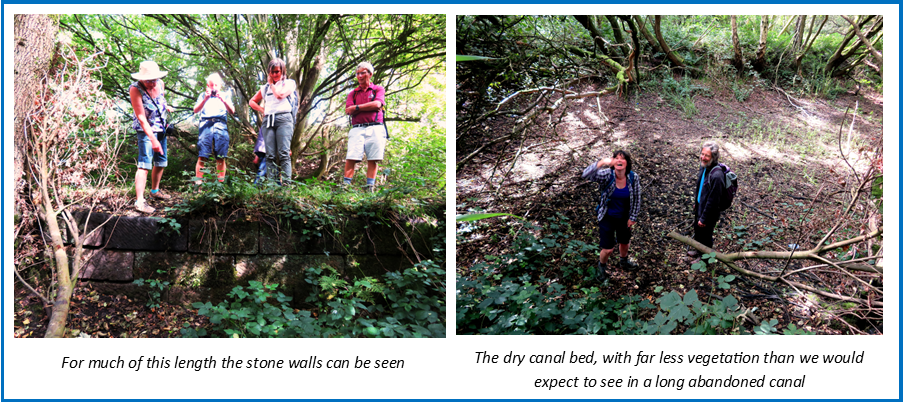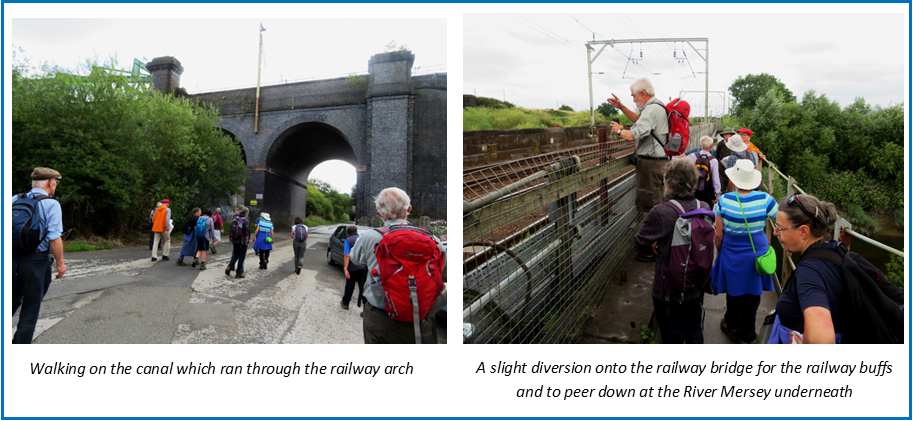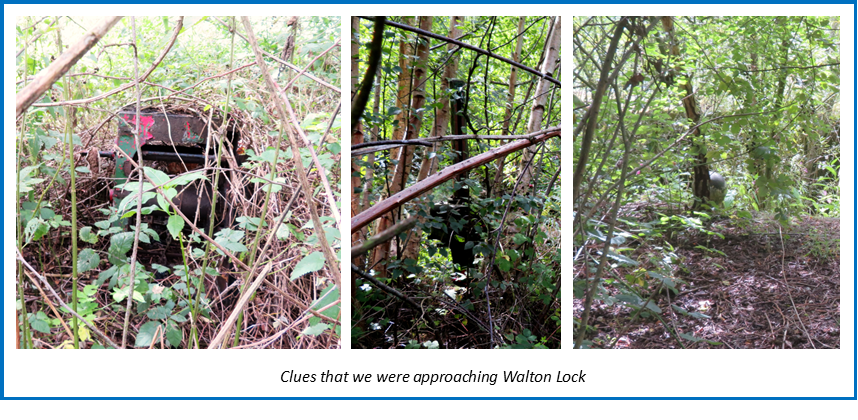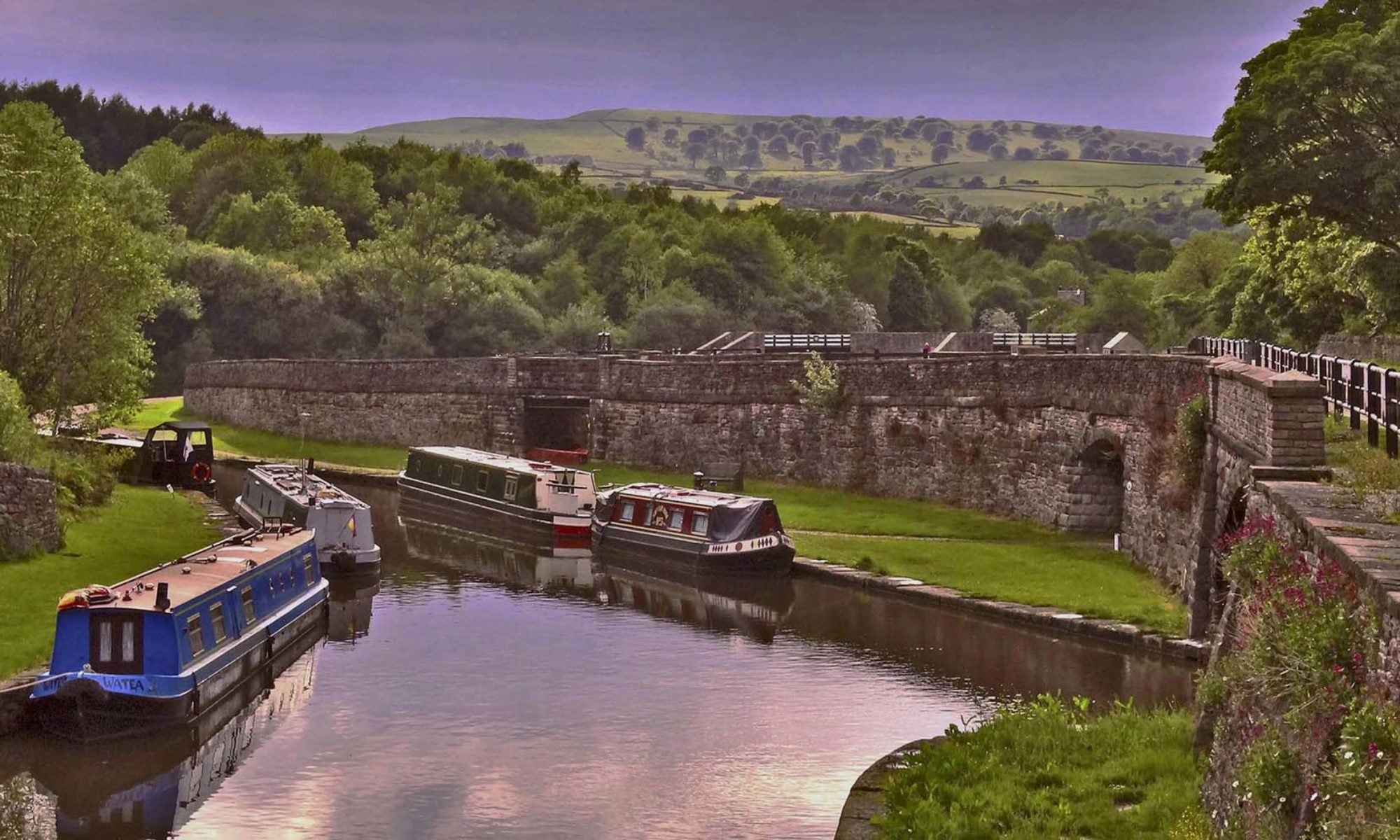The Runcorn and Latchford Canal, also known as the Old Quay Canal and the Black Bear Canal was part of the Mersey and Irwell Navigation. It was first proposed in 1660 that the rivers Mersey and Irwell should be made navigable from Manchester to Liverpool. But it wasn’t until 1720 that the necessary bills were tabled ‘to scour and cleanse the rivers, and to make the necessary cuts and branches, build bridges, sluices, locks and weirs’ starting in the ‘town’ of Manchester, at 93¼ feet above sea level.
The rivers took a very sinuous course so ‘cuts of considerable dimensions’ were built to bypass both the meanderings of the river and its tidal nature. Priestley stated “when their expansive works near Runcorn Gap are completed this navigation will be one of the first importance”.
Work began in 1727 and by 1737 boats ‘of considerable size’ or a small ship’ could make the journey from quays in Water Street, Manchester. A small ship of this time appears to be 75+ feet in length carrying 60-70 tons.

Riverside mills were a constant cause of conflict for the navigation. Often vessels became grounded because water levels at weirs had been lowered so much and legal action was regularly taken against mill owners to correct the problem. But the main difficulty for the navigation was the tidal section of the River Mersey between Warrington and Runcorn which had constantly shifting mudbanks and treacherous currents.
The solution was to build the Runcorn and Latchford canal. Completed in 1804, it was approximately 7 miles (11 km) long. It locked out of the River Mersey at Latchford and back into it at Runcorn Gap. An aqueduct was built from Wollston cut to replace water lost from the locks that were used at each end to raise boats into the new canal section. At its terminus a dock was built which became part of the Port of Runcorn.



In the meantime the Manchester to Runcorn section of the Bridgewater Canal had been built (1776) and the canals were great rivals. Each company would offer reduced charges or special rates and concessions to entice traffic away from the other. Probably the most important cargo carried was raw cotton from Liverpool to Manchester, but timber, dyewoods, pig iron, lead, copper, nails, tar, sand, grain and flour were all carried. It was a common site to see flats piled high with cotton bales – making it difficult for the steerer to see where he was going.
The Runcorn and Latchford rather belatedly started passenger carrying in 1807 (the Bridgewater had been doing this for some years). But in 1830 the Liverpool and Manchester railway opened and the decline started. In 1844 the Runcorn and Latchford was bought out by the Bridgewater Canal Company for £550,800 – a huge amount at the time. They neglected it so its condition deteriorated. In 1882 it was described as being ‘hopelessly choked with silt and filth’ and was open to 50 ton boats for only 47 out of 331 working days.
It had now become cheaper to import goods via Hull, hence the proposal to build the Manchester Ship Canal. The Bridgewater Canal Company was bought out by the Manchester Ship Canal Company in the 1880’s as they wanted to use part of the course of the Runcorn and Latchford for their route. The excavation of the Manchester Ship Canal ploughed through most of the Runcorn end of the Runcorn and Latchford Canal, especially its lock system, so much of the western end of the canal including the docks disappeared.

The eastern end of the Runcorn and Latchford fared rather better, as the section between Twenty Steps Bridge and Latchford Lock was retained. A new lock, called Twenty Steps Lock, was built where the old canal left the course of the Ship Canal, this was used to supply tanneries at Howley with hides imported from Argentina, a trade which continued until the 1960s. This is the section known as the Black Bear Canal, after a local pub. It ceased to be used after the tanneries closed.

Our walk started at Moore Nature reserve car park, roughly midway along the route of the Runcorn and Latchford canal and we headed east towards the Latchford end of the canal.
After crossing the canal a couple of times because of the position of a wildlife lake we were soon walking along the towpath with the canal on our right in remarkably good condition, considering how long this stretch has been abandoned. In many places the stone walls of the canal were clearly visible on both sides of the cut.

We emerged from the leafy towing path onto a road which runs on top of the line of the canal and under the Chester – Warrington line viaduct (originally the London and North Western) which spanned both the River Mersey and the canal. The viaduct provides a footpath over the River Mersey so we made a slight diversion onto it for a better view of the River Mersey and to listen to some railway history from Gerald. From here the canal ran for a short distance alongside a loop in the River Mersey.

We were soon off the road and back on the towing path with the canal on our right and the Mersey on our left. It was a surprise to see this stretch of canal in water with houses backing onto it. This next section, until we crossed the Manchester Ship Canal forms part of the Trans Pennine Trail.

We were now approaching the Manchester Ship Canal at one of the points where it cut into the Runcorn and Latchford and views of the canal were replaced by metal railings with trees and undergrowth beyond. Peering through them gave clues that we were approaching Walton lock. Walton lock was built to give access to the River Mersey from the Ship Canal and a small Warrington dock was built in anticipation of a good trade for Warrington but this was never popular and the dock and lock became derelict.


Following the footpath around the dock brought us out opposite an attractive row of victorian houses with an inscribed stone ‘Riverside View 1870’. Unfortunately for the occupants of the houses the riverside view didn’t last long as the course of the river was altered with the building of the Manchester Ship Canal.
The Transpennine Trail runs down the side of these houses and onto the northern edge of the Ship Canal. A short walk along here brought us to Twenty Steps Lock, the eastern section of the Runcorn and Latchford. The lock is infilled and can be viewed through railings from the side of the canal and from the Ship canal bridge above.
Although the section of canal from here to Latchford lock closed later than the rest of the Runcorn and Latchford the canal here has been infilled but remains a green corridor. A pleasant walk but little to be seen apart from the remains of the locks at each end.

We now left the Runcorn and Latchford, crossed the Manchester Ship Canal, and headed straight down the main road to the London Bridge Inn on the Bridgewater Canal for a very welcome lunch. Then suitably refreshed we headed back towards Moore along a very pleasant stretch of the Bridgewater Canal.

Leaving the Bridgewater at Moore and walked along Moore Lane back towards the Nature Reserve. This took us back across the Chester – Warrington line and the Crewe – Warrington line. These were both raised during the construction of the Ship Canal to give a clear headroom of about 73’6” from normal water level. The Crewe line was diverted to achieve this rise and there is a tunnel under the road and an original road bridge over the line adjacent to the road bridge, the tunnel has been infilled but the portal is still clearly visible. We continued down Moore Lane and re-crossed the Manchester Ship Canal, taking us back to the car park.

Back at the car park some walkers had to leave but a number continued onto the optional extra loop. Heading west through the nature reserve this time it was about half a mile until we were standing in the bed of the Runcorn and Latchford Canal, the footpath runs down the middle of the canal bed and again stone walls were visible on both sides. This path took us back in the direction of the car park and the finish of the walk.
This was a varied and interesting walk but will probably be remembered for the competition as to who could pull out and destroy the largest piece of Himalayan Balsam and for the large amounts of really awful insect bites that a good number of walkers suffered afterwards. In this respect a hot, dry August day was probably not the best scheduling!

Many thanks to Beth for recce-ing and leading the walk (and for the antihistamines!) and to Gerald for all the extra canal and railway information.
Next time out: Weekend Away. The Somerset Coal Canal, evening of 23rd –25th September.

